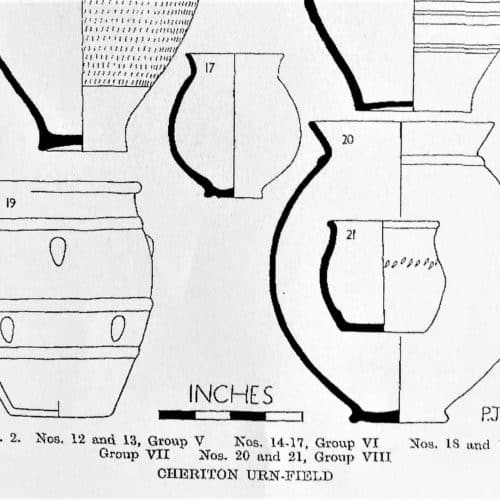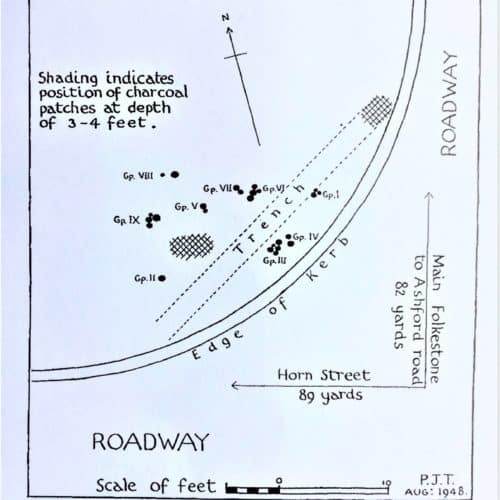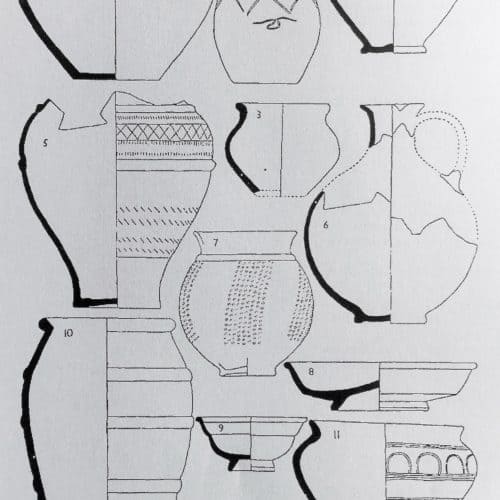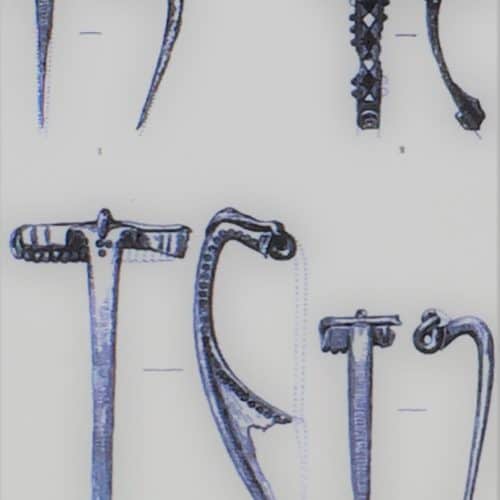Stone Age to Iron Age 9: Cheriton urn-field
In 1948 some workmen were building a new housing estate at Cheriton. They discovered dozens of ancient pots buried about 2 feet (60 cm) below the surface.
An emergency archaeological dig was quickly organised and uncovered even more pots … 34 in total.
The workmen had stumbled across the Cheriton Urn-field - an ancient cemetery, where the charred bones of men, women and children, who had been cremated when they died, had been gathered up and buried in small pots (called cinerary urns).
But who were these people?
The urns were made from rough black Belgic pottery and Roman Samian ware pottery was found with them. All this suggests they were local Iron Age people living in the Folkestone area in the 1st century AD, around the time of the Roman invasion in AD43.
Five intricately decorated Iron Age bronze brooches were also discovered with the pots.
Many of the pots were broken, but some have been pieced back together by archaeologists, like solving 3D jigsaws.
This is an archaeological plan of the Cheriton Urn-field.
It is drawn accurately to scale.
It shows where the different groups of urns (indicated by black dots) were found.
The location of nearby roads (Horn Street and the main Folkestone to Ashford Road) are also indicated.
This archaeological drawing shows the shapes, sizes and patterns of some of the cremation pots (cinerary urns).
The scale is in inches. 1 inch = roughly 2.5cm.
The pots were made from local clay on a potter’s wheel (wheel-thrown pottery), then fired (heated to a very high temperature) in a special oven called a kiln.
Why not have a go at re-creating some of the designs in clay or papier-mâché?
These are decorated bronze brooches that were discovered with some of the pots.
Brooches were useful for fastening clothes together. They were the equivalent of today’s buttons, zips and Velcro. They were worn by men, women and children.
Today these finds are in the collection of Folkestone Museum, and some are on display.
To see the full archaeological report from the Cheriton Urn-field on the Kent Archaeological Society website visit this URL:
Images copyright: Kent Archaeological Society




